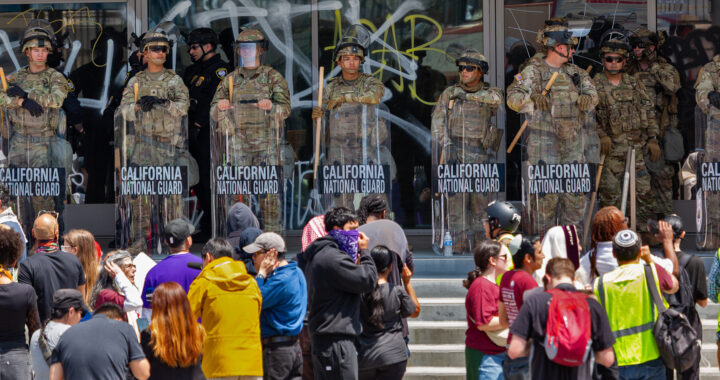Donald Trump has undertaken a sweeping effort to weaken the independence of some of the largest metropolitan areas in the United States. Democratic-led cities, which generate most of the economic and technological progress in the country, are increasingly being treated not as partners in national growth but as adversaries. Through law enforcement takeovers, immigration crackdowns, and political restructuring, these cities face unprecedented pressure.
Trump Versus Blue Cities: Redistricting, Census Battles, and Military Deployments
Intimidation Through Militarization
The latest initiatives from Trump reveal a systematic strategy. His administration has deployed federal law enforcement and the National Guard into cities despite strong objections from local elected leaders. He often framed urban centers as overrun by crime and disorder. Trump has also pressed Republicans in the U.S. Congress and states to redraw congressional maps that reduce urban representation. He has even floated a census redo.
A consistent theme emerges from his recent actions: treating urban cores as political enemies rather than indispensable engines of economic growth. Brookings Institution research shows the largest metropolitan areas produce nearly 75 percent of American economic output by driving advancements in technology. The second Trump administration still views them less as assets than as obstacles. Experts describe this stance as colonial in nature.
Mark Muro, a senior fellow at Brookings Institution, contended that Trump seeks to benefit from the economic productivity of cities while stripping away their independence. He likened the approach to colonial governance, exploiting resources while curbing self-rule. This perception aligns with the history of Trump describing Democrat-led cities, often governed by racial minorities, as dystopian hellholes plagued by poverty, crime, and corruption.
The most visible element of this confrontation is the militarization of urban life. Remember that the Trump administration has recently ordered hundreds of National Guard troops to patrol Washington. It also seized temporary control of its police department. Trump has specifically signaled a willingness to send active-duty military into other cities despite legal complications. These include Chicago, New York, Baltimore, and Oakland.
Moreover, in Los Angeles, amid protests against mass deportations, Trump deployed federalized National Guard forces and even Marines into heavily Hispanic neighborhoods. Armored vehicles and tactical units accompanied immigration agents on enforcement missions. Civil rights groups described the strategy as intimidation aimed not only at immigrant communities but also at Democratic leaders resisting federal directives.
A University of California study suggested these immigration crackdowns directly harmed local economies. California lost roughly 750000 private-sector jobs between May and July 2025. This is proportionally greater than losses during the Great Recession. Hispanic and Asian American workers accounted for most of this decline. Similar drops in Hispanic male workforce force participation have also been observed in New York City.
Gerrymandering and Census Redo
The legal path for the deployments of the National Guard is narrow but strategic. The National Guard in Washington is under presidential authority. This allows actions not restricted by the Posse Comitatus Act. Expanding such measures to other states would require invoking the Insurrection Act. This law has rarely been applied to street crime. Legal scholars warn that a sympathetic Supreme Court may endorse the broad claims of authority of Trump.
Politicians aligned with Trump have also pursued redistricting maneuvers aimed at shrinking the influence of urban voters. In Texas, mid-decade maps have been designed to reduce representation for rapidly growing Democratic metropolitan areas such as Dallas, Houston, and Austin. Despite contributing nearly 80 percent of state growth, these metros are systematically deprived of new districts to guarantee partisan outcomes that undercut their residents.
Note that the efforts in Texas mirror broader Republican strategies across the Sun Belt, where population growth has been concentrated in diverse metropolitan centers. By fragmenting these areas through gerrymandering, legislators reduce the electoral power of minority and urban voters. Critics argue this approach subverts democratic representation, ensuring that political outcomes do not reflect the actual demographics of expanding cities.
The prospect of a census redo further illustrates the intent of Trump to erode urban power and weaken the base of the Democratic Party. Excluding undocumented immigrants from counts would not dramatically alter national partisan balance, but it would weaken cities where immigrant populations are concentrated. Federal funding tied to population totals would shift toward rural areas, reducing resources for urban schools, hospitals, and infrastructure.
It is not hard to ascertain how these strategies will mark a deeper transformation. The normalization of military forces in cities, the manipulation of representation through gerrymandering, and the attempt to rewrite census rules all erode democratic norms. New York University scholar Ruth Ben-Ghiat argues that such approaches habituate the people to authoritarian practices. This delegitimizes local governments and diminishes urban autonomy.
One of the main themes of the second Trump administration is a struggle over political geography and voter bases. Large cities remain the cornerstone of Democratic strength, while rural and exurban areas are the foundation of support for Trump. By militarizing streets, rewriting maps, and reshaping population counts, Trump is recalibrating power to diminish urban resistance and entrench Republican dominance across the political system.
FURTHER READINGS AND REFERENCES
- Ben-Ghiat, R. 13 August 2025. “Trump’s D.C. Takeover Uses Classic Strongman Tactics.” Lucid. Available online
- Haskins, G. and Parilla, J. 2025. “Metro Monitor 2025.” Brookings Metro. Brookings Institution. Available online
- University of California at Merced Community and Labor Center. 2025. The Effects of Recent Federal Immigration Enforcement on California’s Private Sector Employment. University of California at Merced. Available via PDF
